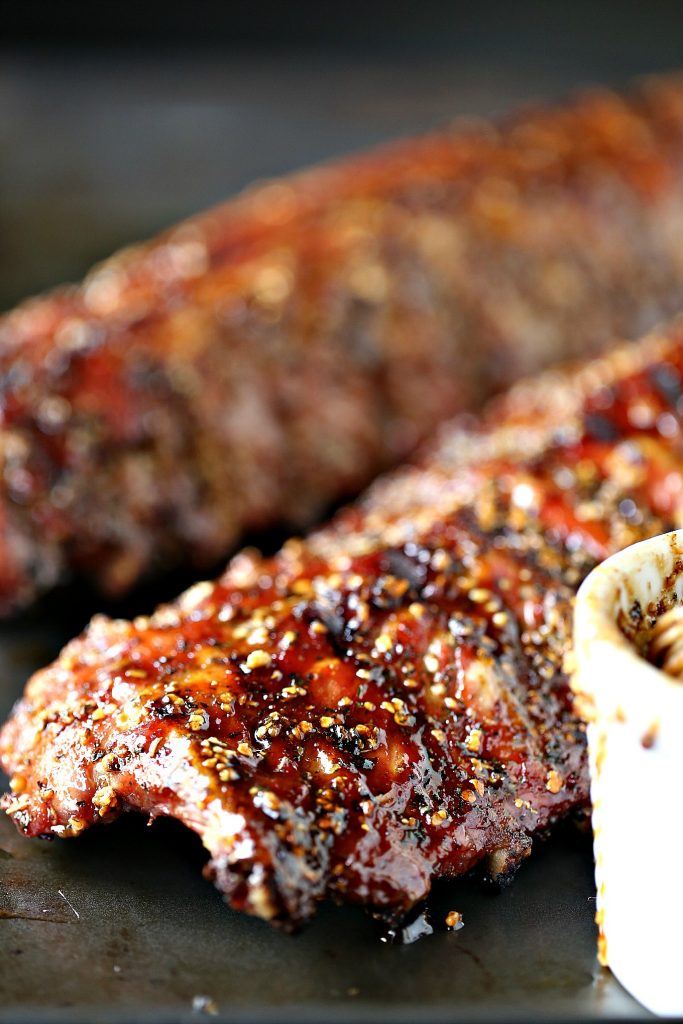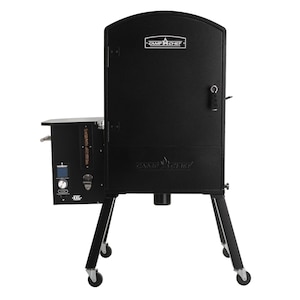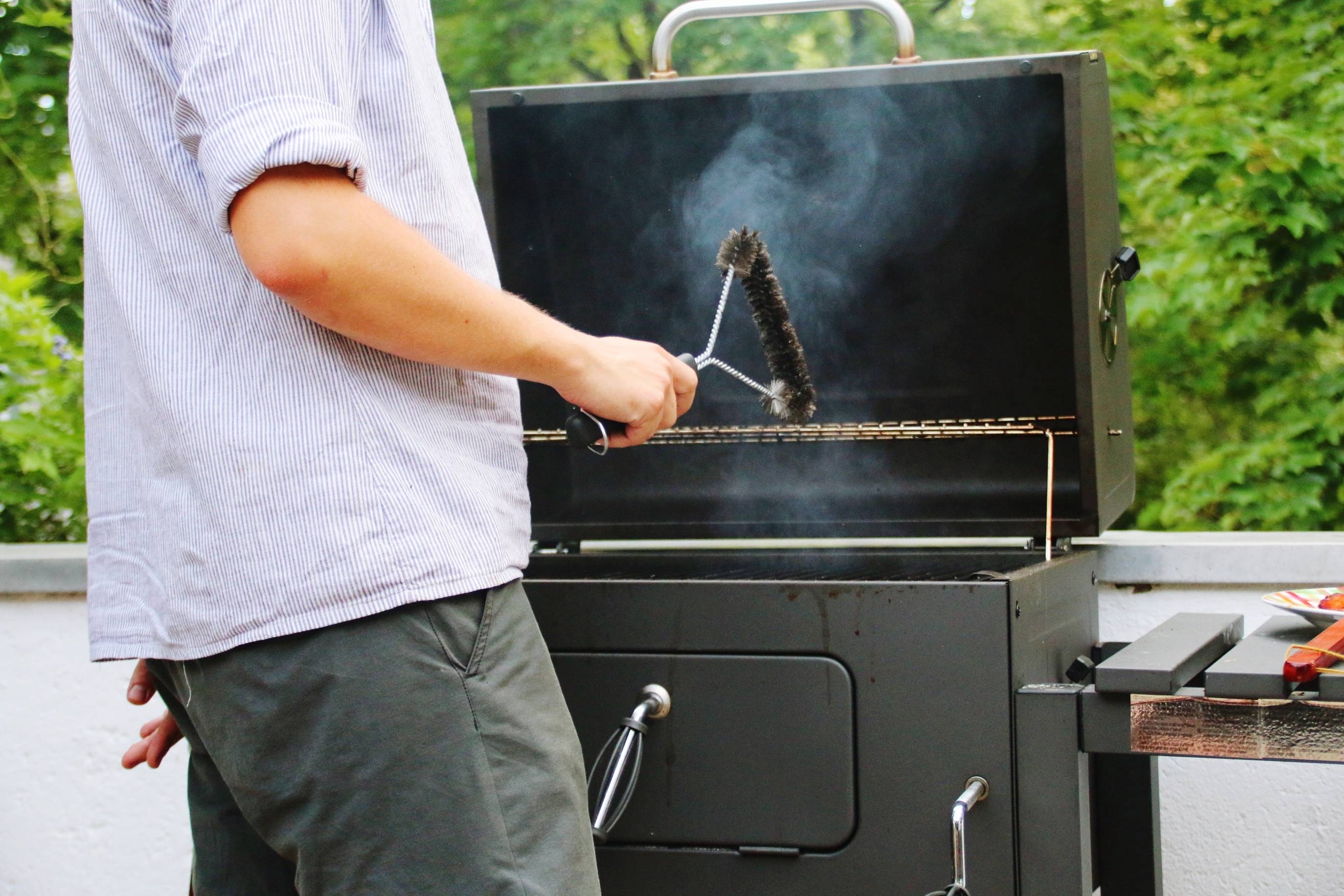
Cook your food on coals for maximum heat. A charcoal grill with wide open vents will produce a higher heat. You have enough oxygen flowing through if your flames are bright. If the flames are too low, it means that there is not enough oxygen. Close the vents if your food is cooking too quickly. Higher heat equals higher flames If the flames appear too low, it is because you are using too much charcoal.
Ventilation
A charcoal grill will have an intake vent. The purpose of this device is to supply oxygen to the combustibles. This is the source of the grill's "fuel." The vents are more open, which means more oxygen can get into the grill, and thus raise the temperature. A key part of controlling the temperature is controlling the oxygen level.
The main way to control the temperature is by using the charcoal grill's intake ventilation. Find two arrow marks close to the vent. If the arrows point half-open, it is the vent. The top lid houses the exhaust dampers and oxygen. You can adjust the heat and intensity of your fire by opening or closing the top lid. The vents are more open, so the fire will heat up faster.
Vents on charcoal grills should always be fully open. The vents should be kept open to ensure that the charcoal is not too hot and burns faster. However, closing the vents will reduce the temperature of the grill and minimize the amount of smoke. The bottom vent must be opened while the top one should stay closed. If you are noticing too much smoke, close the bottom vent. If it does not, you can close it completely or halfway.
The outtake vent, meanwhile, is another component to consider. The outtake ventilation pulls oxygen from air and is different to the intake vent. The gases produced by wood and charcoal fires will cause the fire to be smothered if they are not vented correctly. It is best to adjust your intake vent before you begin cooking in order to get the right temperature. For beginners, you can start at the intake vent and work up.
Exhaust vent
An exhaust vent controls how much air is allowed into a charcoal grill's cooking area. When the vent is partially or fully open, more oxygen will enter the cooking area, which will result in a hotter fire. But if the vent closes, then less oxygen will reach the cooking areas, which will result in a smaller flame. There are many factors that must be taken into account when controlling the exhaust vent.
The exhaust vent on a charcoal grill is designed to equalize the oxygen in the bottom chamber and the amount in the top chamber. This is crucial for cooking the perfect burger. Charcoal grill exhaust vents, sometimes called dampers, are not chimneys to let out heat, but rather a way to control the temperature directly. Properly using the vent will improve the flavor and maintain the tenderness of your food.
The exhaust vent is the most important part of a charcoal grill. Direct cooking of charcoal over coals will produce the greatest heat. You can also use the 2-zone technique to regulate temperature. The 2-zone method allows for food to be moved around by being cooked in sections. To help regulate the flame, you can open the top vent if the food is too hot.
An intake damper is the second part of an exhaust vent for charcoal grills. This vent is located at the bottom of your grill. Wood and charcoal require oxygen to burn. Opening the vent reduces that amount. The intake damper is normally located at the bottom. When one vent is open, temperatures can rise. It also makes the fire hotter and allows you to cook more food without having to lift the lid.
Breathing damper

Charcoal grills work by allowing air into the grill through an intake vent. O2 enters the grill when heat rises. A functioning charcoal grill intake damer opens the grill to air. The intake damper should be kept open to let more oxygen enter the grill. A closed vent would restrict the flow of oxygen. Too much air can cause the coals to heat up and burn food. In contrast, a closed damper will cause the coals to die.
Vents and dampers are often called intake and exhaust vents, but these are the same thing. An intake damper is found on the lower section of a charcoal grill, while an exhaust vent is located on top. A charcoal grill's intake and exhaust vents are positioned to draw in oxygen as fuel. To ensure the proper temperature of your food, keep them open. If the charcoal grill gets too hot, it will produce more smoking than it can handle.
To increase or decrease the temperature, you can adjust the charcoal grill intake damper. The larger the vent opening, the more oxygen is allowed in. The smaller the airflow, the cooler the charcoal grill will be. Two dampers are found on most charcoal grills: one in the lid and one in the bottom bowl. The damper affects the temperature of charcoal grills, so make sure to leave it open for the best smoke flavor. Keep in mind that it may take between 10 and 20 minutes for the charcoal grill intake to settle.
A charcoal grill intake dipper helps prevent the fire from growing out of control. Without a lid, charcoal can be volatile and will burn to ashes. You can easily put out a charcoal-grill by closing the vents. This prevents drafts, regulates temperature, and smothers the fire. This is also known by the "fire triangle", which is a method of controlling the temperature.
When the grill grates are still warm you can clean them.
It is much easier to clean grates on a grill while they are warm than to use chemicals or other metal tools. The first step in cleaning your grill grates is to soak them in a solution of two cups of vinegar and one cup of baking soda. Let the solution sit for around an hour before you scrub the grates with steel wool or a scouring paper. This method is safer than chemical solutions and works better.
You should clean the grill grates after every cooking session. Clean the grates with a high-quality stainless metal brush. To remove any food that has been burned, you can either use a separate scraper OR the built in scraper. If the brush bristles become loose, remove them. Once you have cleaned the grates, you can rinse them thoroughly and dry them.
Cast-iron grates need to be washed thoroughly with soapy water. Grates may lose their nonstick qualities if there is a lot of grease. If you want them to look new, it is essential to thoroughly clean them. You should wash porcelain grill grates with soapy water. You can also use vegetable oil as a cleaning agent to prevent rust.
To scrub your grill grates, you can also use aluminum foil. You can use tongs to help you crumple the aluminum foil. Use a brush to remove any food stuck to the grates. Be sure to let the grill cool before you wipe it down. This will ensure that the grill is clean. You can also leave a charcoal grill on for a few more minutes.
Check the vents

The vents in a charcoal grill control both the oxygen levels and temperature. You will learn how to use the vents correctly and master charcoal grilling. This will allow you to better control the temperature and taste of your food. You should also close all the vents when you're done cooking to prevent a fire and allow the grill to cool down properly before storing it.
It's common for a charcoal grill's lid to rust shut if heavy rain has recently fallen on the area. The rust can block the grill's vent from opening and prevent oxygen from entering. This can result in a semi-cooked meal, or semi-burnt coal. The grill's ventilations are crucial for proper operation. You can prevent them from becoming damaged and make your cooking experience even more enjoyable.
The function of a vent in a grill is to regulate how much oxygen gets in and out. The bottom vent is more important if you're cooking in the winter when there's less oxygen and the food will cook faster. A vent's function is to regulate the temperature. If it's not working, you can use an aluminum pan with a similar effect. You can still cook more food with it, even though the temperature won't change as much as water.
The top vent is also known by the exhaust damper. It is crucial to use the damper correctly when charcoal grilling. If it's closed too much, the fire will be too hot and you'll get too much smoke. Proper settings are important for achieving the desired flavor of smoke. The vent damper should be adjusted according to the type of food that you're preparing. It is also important to consider the type of charcoal grill that you use.
FAQ
Can I cook with my family?
Yes! Yes! It's an enjoyable activity that teaches responsibility and teamwork. From washing vegetables to chopping onion, children can help. Children will love helping to cook if they are taught safe knife handling techniques.
How can leftovers be stored in the most efficient way?
Tupperware containers are a good choice for leftovers. These containers protect food from spoilage and keep it fresh. They also keep foods warm for longer. Remaining food can be frozen in freezer bag. You can freeze leftover food by placing it in another freezer bag. This will prevent any air from escaping. Once the food is frozen place it in an airtight container, such as a zip lock bag.
What should a beginner cook start with?
A beginner should start cooking something easy, like pasta, rice, or soup. A recipe book or a YouTube video can help you learn how to cook. It's much more fun to cook with someone you know. You can cook together as a family or with friends.
What is the best career path for someone who wants to be a chef? How can I start my career as a chef?
An apprenticeship is a good way to start your career as a chef. Apprenticeships offer the chance to work for several year without any tuition fees. After your apprenticeship is completed, you can apply to be a sous chef. Sous chefs assist cooks with tasks such as making salads, and desserts. They oversee all aspects of the restaurant's operation.
Statistics
- The median pay for a chef or head cook is $53,380 per year or $25.66/hour, according to the U.S. Bureau of Labor Statistics (BLS). (learnhowtobecome.org)
- under 10 Kids have been taught that there is special food just for them, and Fiese says that 10 percent of kids will throw a tantrum if they don't get the food they want. (washingtonpost.com)
- On average, chefs earn $58,740 a year, according to the BLS. - learnhowtobecome.org
External Links
How To
How to Become a Chef
The career of chef is one of most rewarding. This job requires a lot knowledge and skills. It can be difficult to determine what job is best for you. However, if you want to start working immediately, there are many ways to get into this field. There are many options for you to work in restaurants, hotels, catering businesses, or take cooking classes. Here are some tips and tricks to help you decide what career path is best for you.
-
Learn how you can cook! Everybody should learn to cook once in their lifetime. Learn how to cook even if you don’t know much about cooking. There are so many great recipes available online. They are also easy to follow. You should not rush learning new skills. Take your time and enjoy every step of the process.
-
Get a degree
If you want to become a professional chef, you should consider getting a culinary arts degree. You'll be able develop your personal style and taste, while also learning valuable information. Culinary schools offer courses such as baking, pastry making, meat cutting, and much more. They usually require students to attend classes for several years before they graduate. You should consider carefully before you choose any school if you want to be a chef.
-
Work in a restaurant
Working in a restaurant is probably the easiest way to enter the world of chefs. Most people who decide to become a chef do this first because it gives them hands-on experience. Restaurants seek qualified staff, especially those with previous experience in the same field. Restaurant jobs are a great way to get a job as a chef.